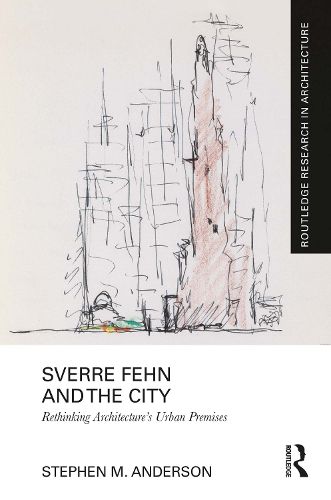Readings Newsletter
Become a Readings Member to make your shopping experience even easier.
Sign in or sign up for free!
You’re not far away from qualifying for FREE standard shipping within Australia
You’ve qualified for FREE standard shipping within Australia
The cart is loading…






The urban attentions of Pritzker Laureate Sverre Fehn (1924-2009) are extensive, but as yet virtually unexplored. This book examines ten select projects to illuminate Fehn's approach to the city, the embodiment of that thinking in his designs, and the broader lessons those efforts offer for better understanding the relationship between architecture and urban life, with unignorable implications for emergent urban architecture and its address of sociological and ecological crises. Wary of large-scale planning proposals or the erasure of existing urban patterns, Fehn offered an uncommon and profoundly vibrant approach to urbanism at the scale of the single architectural project. His writings, constructed buildings, competition entries, and lectures suggest opportunities for reinvigorating architecture's engagement with the city, and provoke a rethinking of concepts foundational to its theorization. What is the nature of urbanity? What is the relationship of urbanity to the natural world? What is the role of architecture in the provision and sustenance of urban life? While exploring this territory will expand our knowledge of an architect central to key developments of late modernism, the range of the book and the arguments developed therein delineate far broader aims: a fuller understanding of architecture's urban promise.
$9.00 standard shipping within Australia
FREE standard shipping within Australia for orders over $100.00
Express & International shipping calculated at checkout
The urban attentions of Pritzker Laureate Sverre Fehn (1924-2009) are extensive, but as yet virtually unexplored. This book examines ten select projects to illuminate Fehn's approach to the city, the embodiment of that thinking in his designs, and the broader lessons those efforts offer for better understanding the relationship between architecture and urban life, with unignorable implications for emergent urban architecture and its address of sociological and ecological crises. Wary of large-scale planning proposals or the erasure of existing urban patterns, Fehn offered an uncommon and profoundly vibrant approach to urbanism at the scale of the single architectural project. His writings, constructed buildings, competition entries, and lectures suggest opportunities for reinvigorating architecture's engagement with the city, and provoke a rethinking of concepts foundational to its theorization. What is the nature of urbanity? What is the relationship of urbanity to the natural world? What is the role of architecture in the provision and sustenance of urban life? While exploring this territory will expand our knowledge of an architect central to key developments of late modernism, the range of the book and the arguments developed therein delineate far broader aims: a fuller understanding of architecture's urban promise.